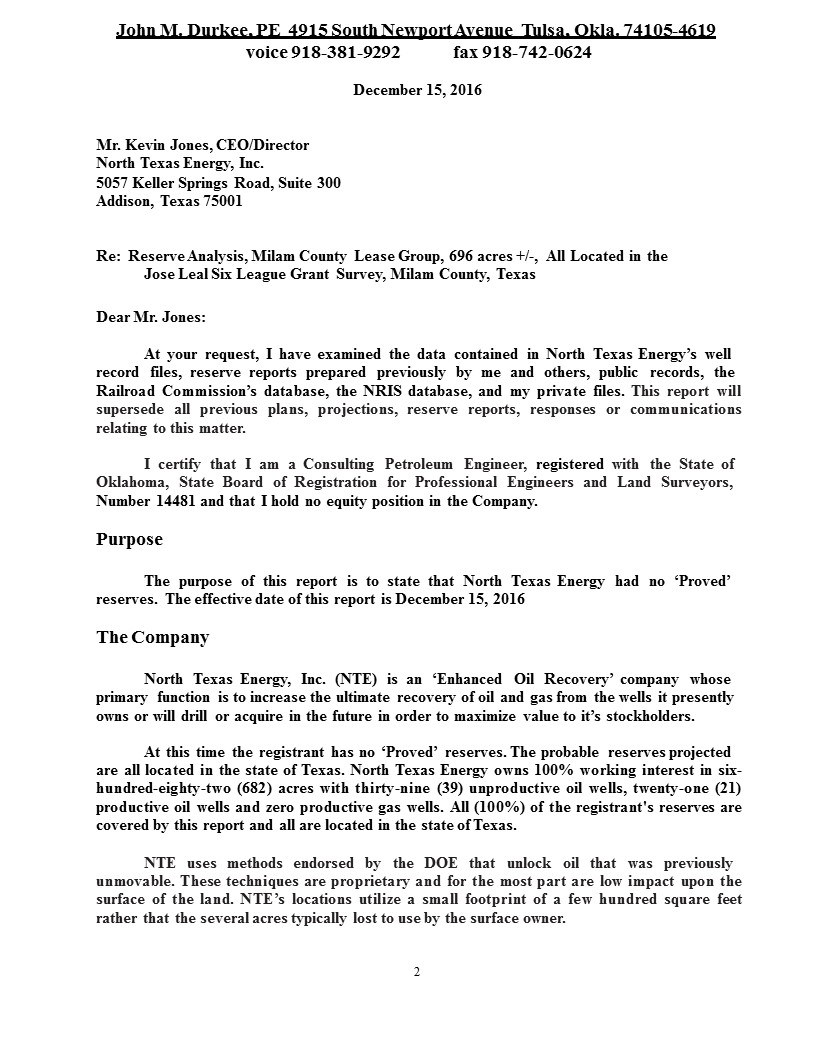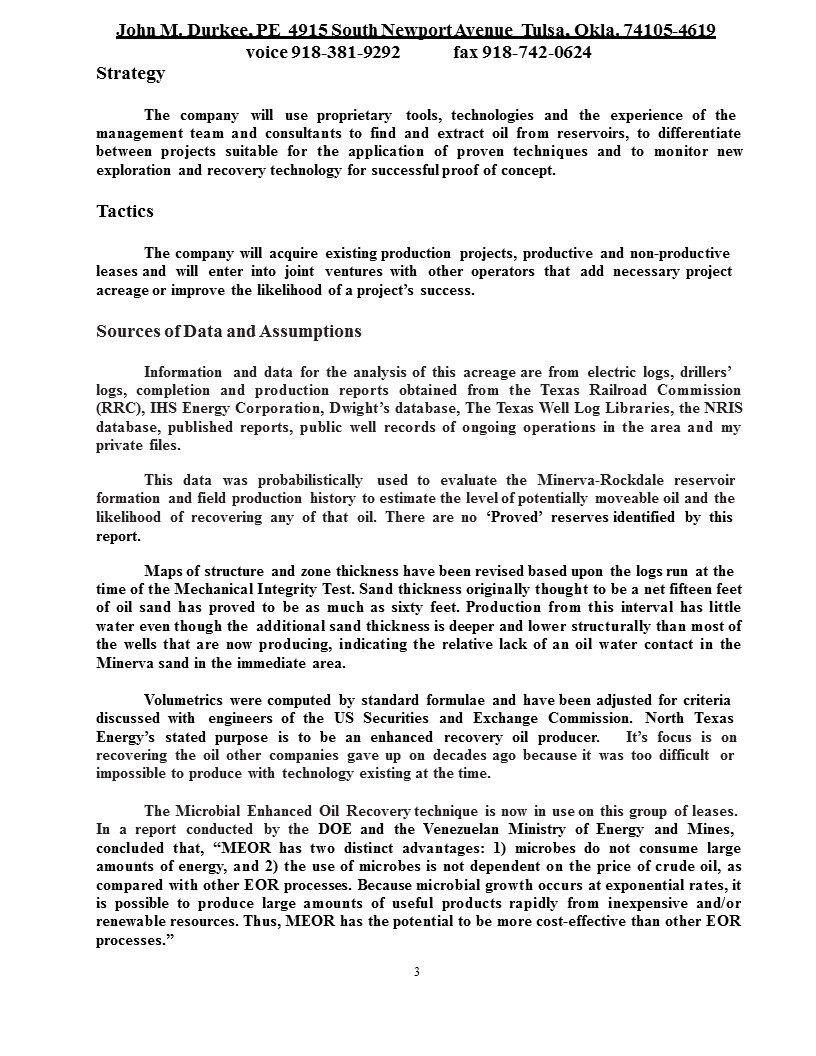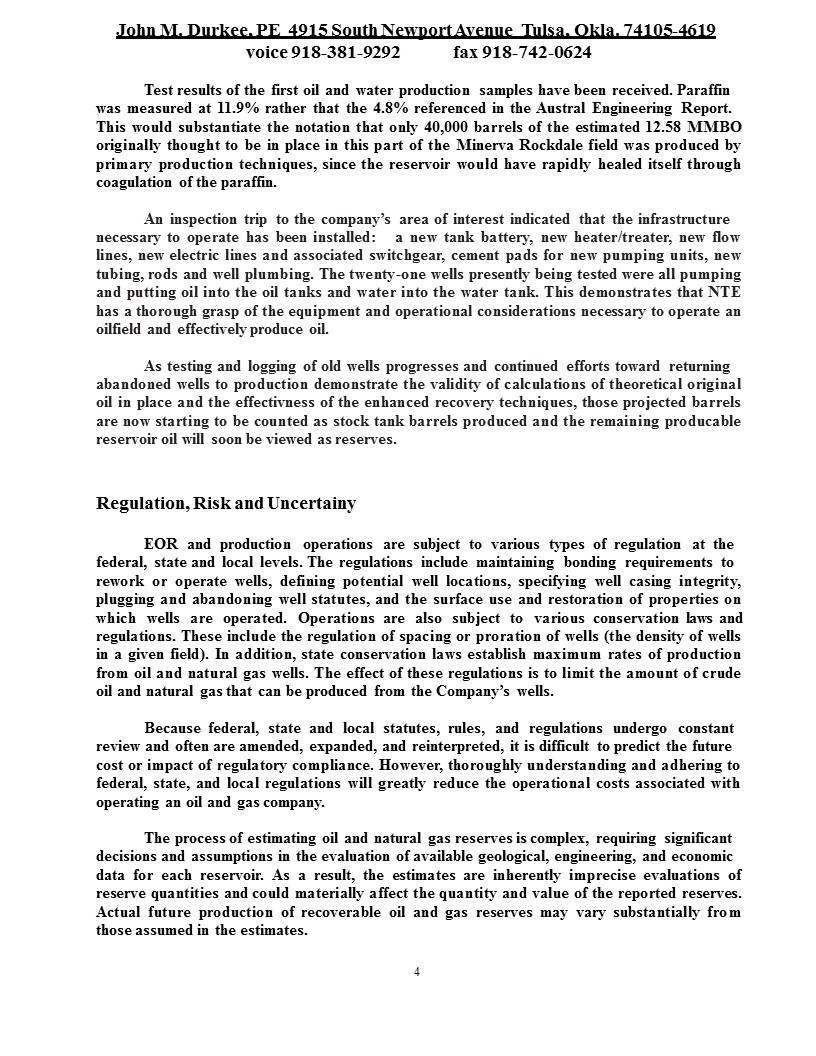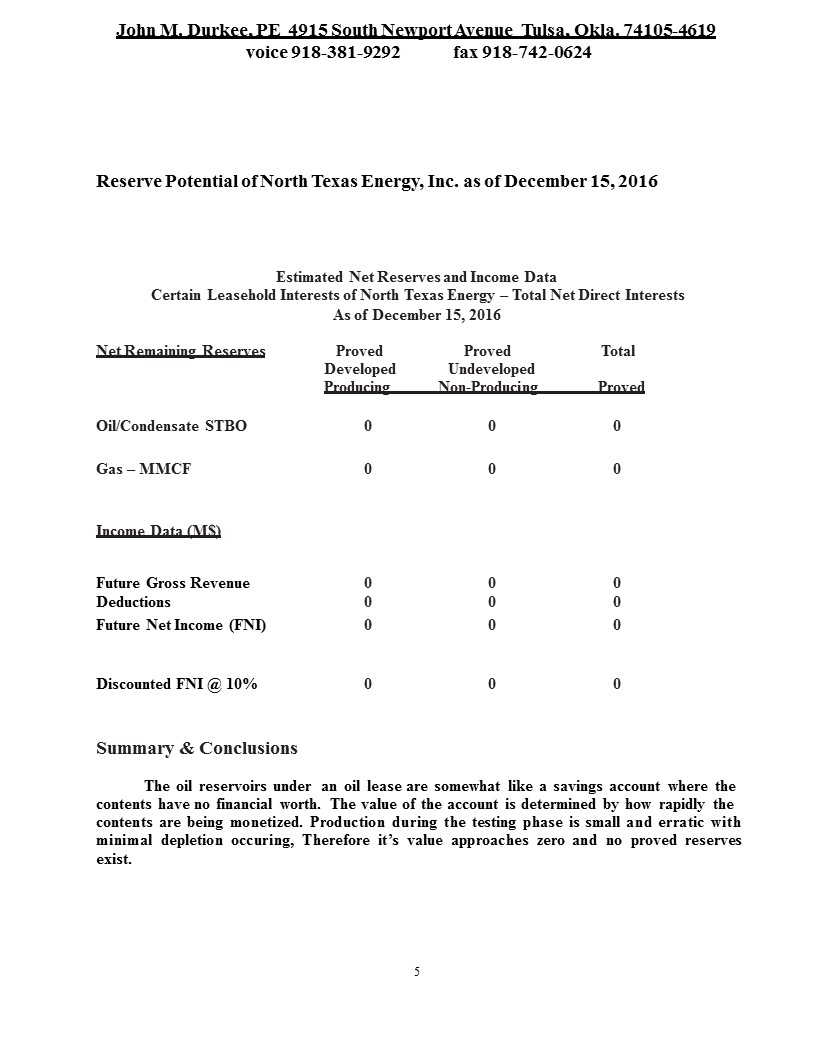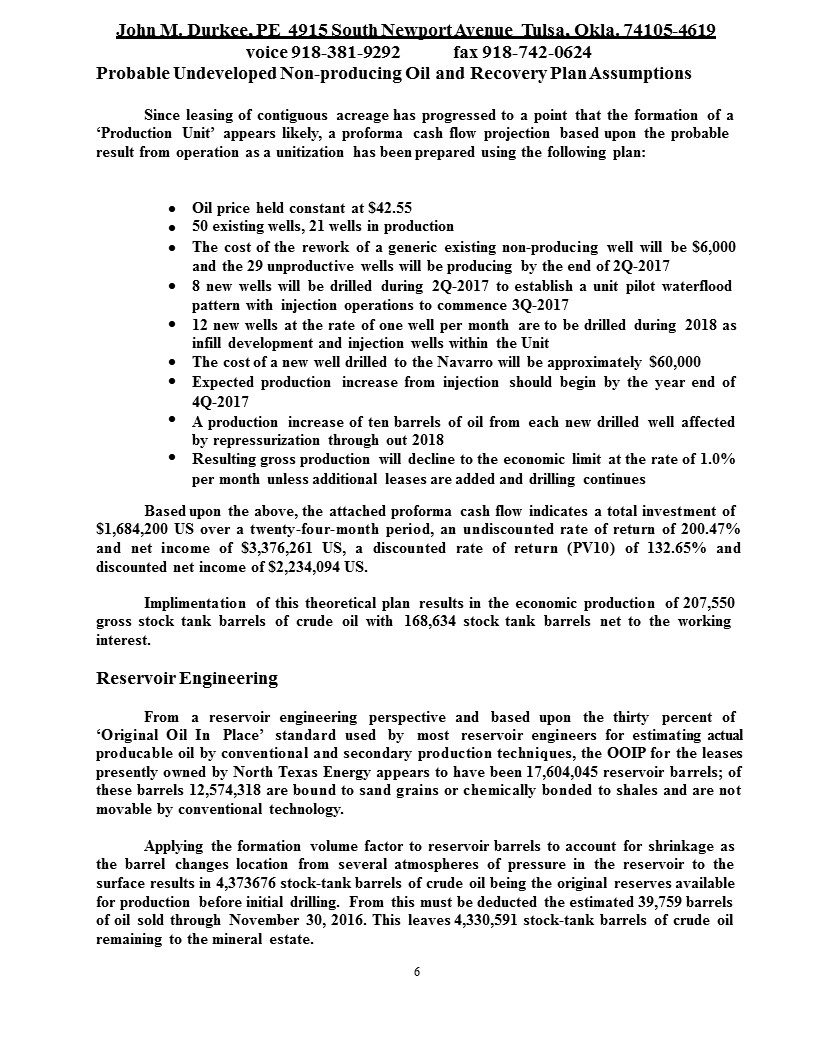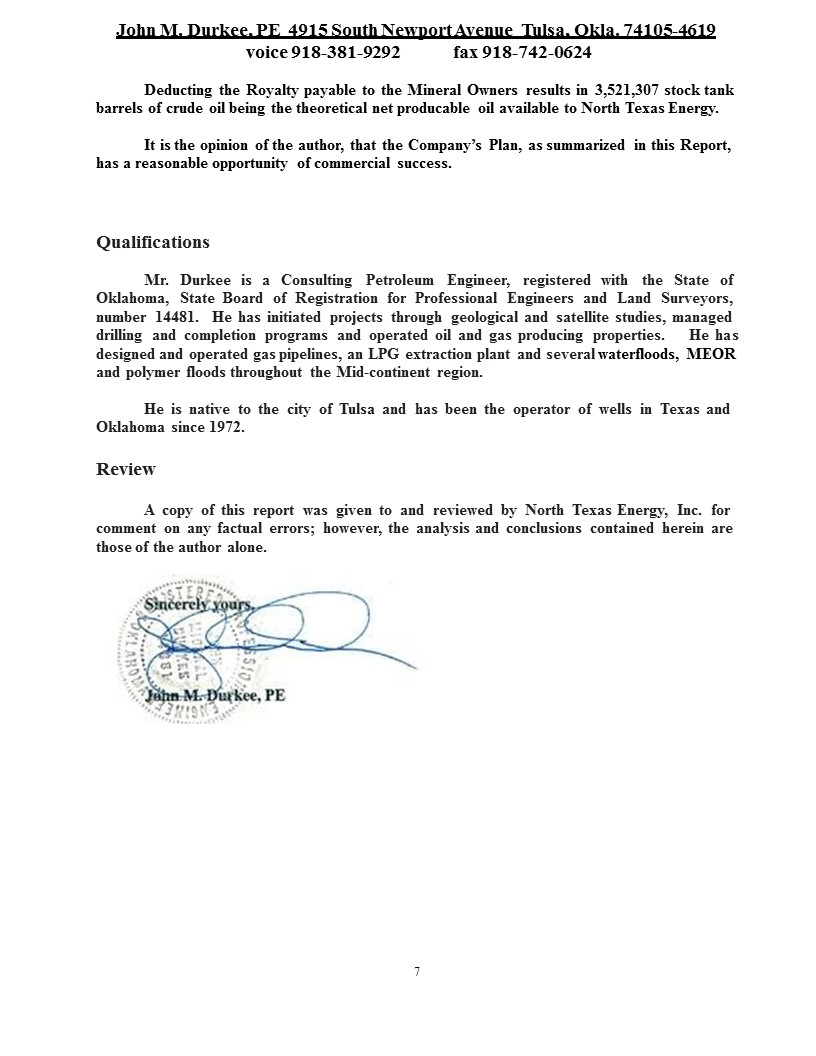John M. Durkee, PE 4915 South Newport Avenue Tulsa, Okla. 74105-4619 voice 918-381-9292 fax 918-742-0624 Test results of the first oil and water production samples have been received. Paraffinwas measured at 11.9% rather that the 4.8% referenced in the Austral Engineering Report.This would substantiate the notation that only 40,000 barrels of the estimated 12.58 MMBO originally thought to be in place in this part of the Minerva Rockdale field was produced by primary production techniques, since the reservoir would have rapidly healed itself through coagulation of the paraffin. An inspection trip to the company’s area of interest indicated that the infrastructurenecessary to operate has been installed: a new tank battery, new heater/treater, new flow lines, new electric lines and associated switchgear, cement pads for new pumping units, new tubing, rods and well plumbing. The twenty-one wells presently being tested were all pumping and putting oil into the oil tanks and water into the water tank. This demonstrates that NTE has a thorough grasp of the equipment and operational considerations necessary to operate an oilfield and effectively produce oil. As testing and logging of old wells progresses and continued efforts toward returningabandoned wells to production demonstrate the validity of calculations of theoretical original oil in place and the effectivness of the enhanced recovery techniques, those projected barrels are now starting to be counted as stock tank barrels produced and the remaining producable reservoir oil will soon be viewed as reserves. Regulation, Risk and Uncertainy EOR and production operations are subject to various types of regulation at thefederal, state and local levels. The regulations include maintaining bonding requirements torework or operate wells, defining potential well locations, specifying well casing integrity, plugging and abandoning well statutes, and the surface use and restoration of properties on which wells are operated. Operations are also subject to various conservation laws and regulations. These include the regulation of spacing or proration of wells (the density of wells in a given field). In addition, state conservation laws establish maximum rates of production from oil and natural gas wells. The effect of these regulations is to limit the amount of crude oil and natural gas that can be produced from the Company’s wells. Because federal, state and local statutes, rules, and regulations undergo constantreview and often are amended, expanded, and reinterpreted, it is difficult to predict the futurecost or impact of regulatory compliance. However, thoroughly understanding and adhering to federal, state, and local regulations will greatly reduce the operational costs associated with operating an oil and gas company. The process of estimating oil and natural gas reserves is complex, requiring significantdecisions and assumptions in the evaluation of available geological, engineering, and economicdata for each reservoir. As a result, the estimates are inherently imprecise evaluations of reserve quantities and could materially affect the quantity and value of the reported reserves. Actual future production of recoverable oil and gas reserves may vary substantially from those assumed in the estimates. 4

